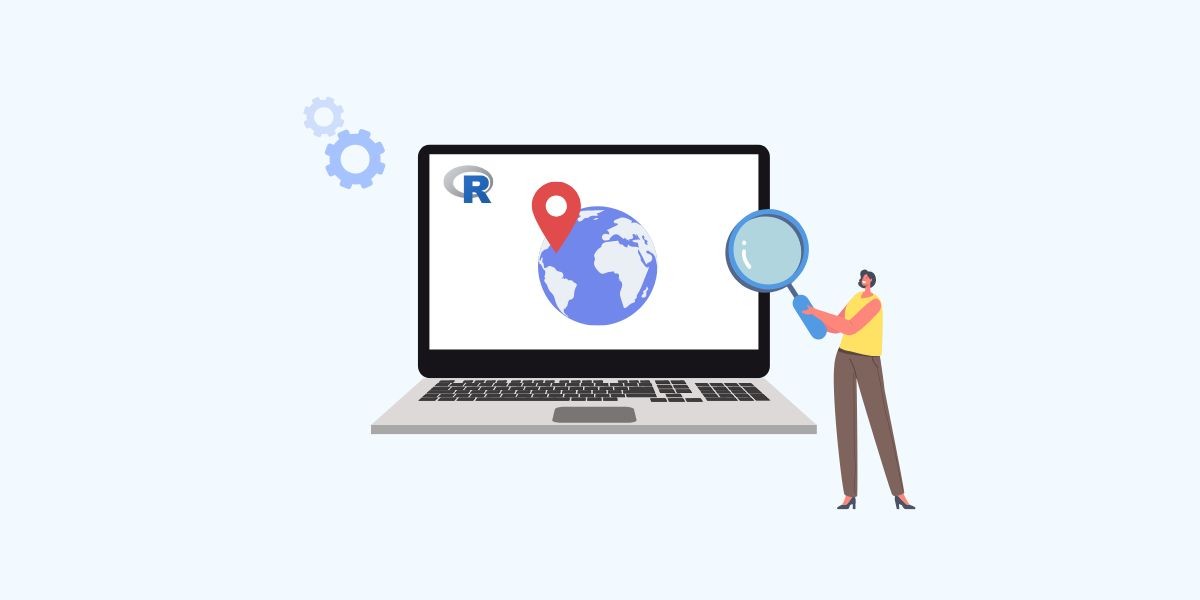
What is data parsing? Definition, benefits and challenges
Data parsing is a process during which structured information can be extracted from unstructured data sources. Professionals often use the term at the time of some sort of work with web pages. They manage to fully analyze the HTML code of the page and extract all the necessary information.
What does a parser do?
Parsing sites is a process that consists of certain sequential actions. It does the following:
- loads the raw data for further analysis. If we are talking about the web, this could be loading an HTML page;
- examines the structure of the data to understand what information needs to be extracted. It is important for a specialist to understand where it is located;
- extracts important data. This can be accomplished by using various HTML tags, attributes, CSS selectors, and any other methods that can help pinpoint the exact location and structure of the data;
- processes the retrieved data to achieve the desired format or structure;
saves the resulting data for future use.
Today, parsing is used in many fields. At the same time, you should not forget about privacy laws at the time of collecting and processing information.
Types of parsing
Parsing is a process that is divided into several types depending on what data and sources of information are used in the process. Among the main ones, the following should be noted:
- XML parsing, which in turn has two subspecies, namely SAX parsing (Simple API for XML) – line-by-line event-driven data extraction from XML files, and XML DOM parsing – the process of extracting data from XML when the document object model is used;
- HTML parsing is also divided into two subspecies: DOM parsing (Document Object Model) – data is extracted from HTML documents that are represented as a tree structure of objects, and CSS parsing – data is extracted from cascading style sheets (CSS);
- JSON-parsing – data is extracted from JSON files one by one. For this purpose, libraries for object deserialization are used. Then JSON strings begin to be converted into objects that fully correspond to the programming language;
- textual content parsing is used to extract certain data from text, and so-called “patterns” are used for this purpose. Then the text is divided into tokens or tokens, which is further analyzed;
- binary parsing is used to extract structured data from binary formats;
- log files – the process extracts all necessary information about errors, requests and other necessary events;
- Web Scraping – data is extracted by retrieving information from web pages. HTTP requests and HTML code analysis are used for this purpose.
There is also such a concept as specialized types of parsing. This is when data is extracted from electronic pages and from structured databases.
Each type of parsing has its own advantages and disadvantages. Before deciding on the appropriate type, you should identify the specific task and the type of data to be extracted.

Extracting information from a website using a real example
To understand how real-time parsing works, let’s look at a simple example.
Let’s say you need to extract headlines of certain news from a certain website. To do this, we choose parsing to extract headline information from the HTML code of the page. So what does this look like in practice:
- enter the URL of the website for further parsing;
- send a request to retrieve the HTML code of the page. To do this, enter the code: response = requests.get(url);
- check the success of the entered request. To do this, we use BeautifulSoup to parse the HTML code and look for all the news headlines on the selected page.
In the final step, we just need to output all the news headlines.
In this example, we used the requests library to send a request to a website and get the HTML code of the page. And for parsing the HTML, we resorted to BeautifulSoup. With the right approach, all the news headlines should be displayed on your screen.
You can find all the parsing codes you need on Ringostat’s website. Here you will also find private mobile proxies for introducing social pages, scanning sites and other purposes. For beginners, the developer offers a free trial version.
Pros of data parsing
Data parsing is a process that has many benefits, and its use sometimes plays a key role in a multitude of tasks. Among the main positives, the following should be noted:
- data collection is completely automated;
- time saving due to the efficiency of automation;
- all data is updated in real time;
- with the help of data parsing it is always possible to effectively analyze the market, evaluate trends and monitor the actions of competitors;
- parsing is effectively used for research and analytics;
- prices and stocks can be monitored effectively;
- it is easy to forecast future events and trends;
- parsing can be used to easily compare and evaluate data between different sources;
- data can be extracted from public sources as well as government databases;
- it is possible to analyze and track activity in social networks for further interaction with the audience;
- effective integration with other information systems.
Having evaluated all the advantages, we can conclude that data parsing is a truly powerful tool that allows you to collect and analyze information.
Disadvantages of using the technology
Like any technology, parsing also has a number of disadvantages that are important to know about before you start working with it. The following should be attributed to the main ones:
- work can be disrupted due to the fact that web pages change their structure quite often. For this, you need to keep an eye on constant updates;
- many sites have learned to use blocking parsers, so it is possible that an IP address may be blocked;
- the collection of information may violate privacy policies, so there may be legal repercussions;
- a statistical parser may not be able to catch all changes in dynamic data;
- parsing large amounts of data requires the use of many resources, which is not always possible;
- legal restrictions on data collection and use have never been lifted. Incorrect parsing can accidentally break the law, and lead to serious problems;
- it is not always possible to extract information accurately, as websites may contain various errors.
To be effective, you should carefully read a web page’s terms of use before collecting data.
What can competitors spar?
This question interests a lot of people, because in fact no one is immune to information leakage. Your competitors can spar
- complete information about your products or services;
- information about prices, promotions and other interesting offers;
- website structure to find out which pages are currently popular and what changes are basically taking place;
- SEO strategy. Competitors need this in order to understand what queries from users you are interested in and what goals you are pursuing;
information about your social media activity; - information about the availability of new products, technologies or ideas.
To avoid such problems, you should not forget about appropriate protection methods. For example, you can restrict access to certain parts of the site, use CAPTCHA. You should also not forget about the constant monitoring of traffic. This will allow you to timely identify suspicious activity on the site.
How to protect your site from collecting information on it
A lot of factors can significantly complicate the protection of the site from the collection of information. But, nevertheless, there are general recommendations that will help to significantly reduce the risks:
- create a robots.txt file. This will allow you to tell robots which pages should not be indexed;
- restrict access to the API. To do this, use special keys and tokens;
- use special headers so that you can control the browser behavior yourself;
- limit the speed of requests from one IP address per unit of time;
- don’t be lazy to use captcha or any other means of verifying users who want to get to your site;
- encrypt data, ensuring its secure transmission between the server and users;
- constantly monitor activity. If you have any suspicions, it is better to take special measures;
- analyze user headers;
- update software regularly;
- use firewalls and special systems to detect any intrusions.
Using these simple rules, you will be able to effectively strengthen the protection of your site.
The main points of parsing legality
Any extraction of data from the Internet, and especially parsing an online store, is legally controlled and has a number of restrictions. You should follow a number of rules when working to avoid getting into serious legal trouble.
Parsing of goods or any other data first of all needs careful familiarization with the terms of use of web pages. Recall that some sites prohibit parsing, and these rules should definitely not be violated. If the site prohibits certain actions, such as indexing or parsing, it is better not to violate these rules.
You should not forget about copyrights as well. If you use some data for commercial purposes, and without proper authorization, then serious legal problems can begin.
Excessive requests to websites can also be considered as a ddos attack or unwanted activity. That’s why experts recommend keeping reasonable intervals. This will avoid harm to the server. Recently, a lot of sites are implementing such a check as CAPTCHA. You should not bypass them, as this can violate all the terms of use.
Well and most importantly, don’t forget about ethical standards. Even if the site legally and authorizes the use of specific data, ethical standards should be followed. Otherwise, it can negatively affect the overall operation of the server.

Thesis conclusions
In simple words parsing is the process of analyzing and extracting structured data from different sources.
Parsing, in the context of information technology, is the process of analyzing and extracting structured data from unstructured data. Thanks to it, you can effectively automate the process of collecting this or that information. This significantly saves time and resources. Thanks to parsing, you can combine data from different sources, which greatly simplifies their analysis and further use. Recently, this process is often used for business purposes in order to effectively monitor competitors, analyze the market, collect feedback and perform other tasks.
The potential for development should not be overlooked. Thanks to the latest technologies, new opportunities in the field of data analysis and business development are opening up before users.









